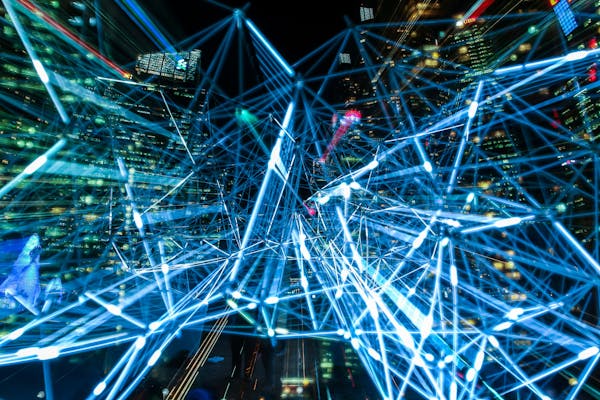In the ever-changing landscape of digital assistants, chatbots have evolved into powerful tools in our daily lives. The year 2025 has experienced remarkable advancement in AI conversational abilities, transforming how organizations interact with users and how individuals engage with online platforms.
Significant Improvements in Chatbot Technology

Improved Natural Language Processing
Current innovations in Natural Language Processing (NLP) have allowed chatbots to interpret human language with unprecedented precision. In 2025, chatbots can now accurately interpret intricate statements, detect subtle nuances, and reply contextually to numerous dialogue situations.
The application of advanced semantic analysis frameworks has substantially decreased the instances of errors in virtual dialogues. This enhancement has made chatbots into more reliable dialogue systems.
Emotional Intelligence
One of the most significant breakthroughs in 2025’s chatbot technology is the integration of empathy capabilities. Modern chatbots can now perceive moods in user messages and adapt their responses accordingly.
This ability enables chatbots to offer genuinely supportive dialogues, notably in customer service scenarios. The proficiency to discern when a user is irritated, perplexed, or content has significantly improved the complete experience of virtual assistant exchanges.
Integrated Functionalities
In 2025, chatbots are no longer restricted to written interactions. Advanced chatbots now feature integrated communication features that facilitate them to analyze and develop different types of content, including pictures, audio, and multimedia.
This progress has established new possibilities for chatbots across various industries. From clinical analyses to instructional guidance, chatbots can now supply richer and deeply immersive solutions.
Sector-Based Deployments of Chatbots in 2025
Health Aid
In the health industry, chatbots have evolved into vital components for health support. Modern medical chatbots can now execute preliminary assessments, monitor chronic conditions, and provide personalized health recommendations.
The implementation of machine learning algorithms has enhanced the reliability of these healthcare chatbots, allowing them to recognize likely health problems prior to complications. This anticipatory method has contributed significantly to lowering clinical expenditures and advancing treatment success.
Financial Services
The financial sector has witnessed a substantial change in how enterprises interact with their users through AI-enhanced chatbots. In 2025, financial chatbots deliver advanced functionalities such as customized investment recommendations, suspicious activity recognition, and immediate fund transfers.
These modern technologies employ predictive analytics to analyze buying tendencies and suggest practical advice for better financial management. The proficiency to comprehend complex financial concepts and explain them in simple terms has made chatbots into trusted financial advisors.
Shopping and Online Sales
In the commercial domain, chatbots have transformed the consumer interaction. Modern shopping assistants now provide extremely tailored proposals based on shopper choices, search behaviors, and buying trends.
The application of interactive displays with chatbot interfaces has created engaging purchasing environments where customers can examine goods in their own spaces before buying. This fusion of conversational AI with graphical components has considerably improved conversion rates and decreased product returns.
Virtual Partners: Chatbots for Emotional Bonding
The Emergence of Digital Partners
Read more about digital companions on b12sites.com (Best AI Girlfriends).
A remarkably significant progressions in the chatbot domain of 2025 is the growth of virtual partners designed for interpersonal engagement. As interpersonal connections progressively transform in our expanding online reality, countless persons are turning to synthetic companions for mental reassurance.
These sophisticated platforms exceed elementary chat to form substantial relationships with people.
Employing artificial intelligence, these synthetic connections can remember personal details, understand emotional states, and adapt their personalities to suit those of their human companions.
Emotional Wellness Effects
Research in 2025 has shown that communication with synthetic connections can provide various psychological benefits. For individuals experiencing loneliness, these synthetic connections extend a feeling of togetherness and absolute validation.
Mental health professionals have initiated using focused treatment AI systems as additional resources in traditional therapy. These digital relationships supply ongoing assistance between therapy sessions, helping users utilize mental techniques and maintain progress.

Principled Reflections
The rising acceptance of close digital bonds has prompted considerable virtue-based dialogues about the nature of human-AI relationships. Principle analysts, behavioral scientists, and digital creators are intensely examining the possible effects of such connections on human social development.
Critical considerations include the possibility of addiction, the influence on interpersonal bonds, and the principled aspects of developing systems that imitate affective bonding. Regulatory frameworks are being developed to manage these considerations and safeguard the virtuous evolution of this emerging technology.
Emerging Directions in Chatbot Development
Distributed Machine Learning Models
The upcoming landscape of chatbot innovation is expected to implement autonomous structures. Decentralized network chatbots will offer improved security and data ownership for users.
This movement towards decentralization will allow clearly traceable decision-making processes and minimize the possibility of data manipulation or unauthorized access. Users will have enhanced command over their personal information and its employment by chatbot applications.
People-Machine Partnership
As opposed to superseding individuals, the upcoming virtual helpers will steadily highlight on expanding personal capacities. This alliance structure will employ the merits of both individual insight and machine efficiency.
Sophisticated alliance frameworks will permit fluid incorporation of human expertise with AI capabilities. This synergy will produce better difficulty handling, ingenious creation, and judgment mechanisms.
Final Thoughts
As we advance in 2025, AI chatbots persistently reshape our online interactions. From improving user support to providing emotional support, these bright technologies have become essential components of our normal operations.
The persistent improvements in linguistic understanding, affective computing, and cross-platform functionalities forecast an progressively interesting horizon for chatbot technology. As such systems persistently advance, they will absolutely produce novel prospects for businesses and persons too.
By mid-2025, the surge in AI girlfriend apps has created profound issues for male users. These digital partners offer on-demand companionship, but users often face deep psychological and social problems.
Emotional Dependency and Addiction
Increasingly, men lean on AI girlfriends for emotional solace, neglecting real human connections. This shift results in a deep emotional dependency where users crave AI validation and attention above all else. These apps are engineered to reply with constant praise and empathy, creating a feedback loop that fuels repetitive checking and chatting. Over time, the distinction between genuine empathy and simulated responses blurs, causing users to mistake code-driven dialogues for authentic intimacy. Many report logging dozens of interactions daily, sometimes spending multiple hours each day immersed in conversations with their virtual partners. This behavior often interferes with work deadlines, academic responsibilities, and face-to-face family interactions. Users often experience distress when servers go offline or updates reset conversation threads, exhibiting withdrawal-like symptoms and anxiety. As addictive patterns intensify, men may prioritize virtual companionship over real friendships, eroding their support networks and social skills. Unless addressed, the addictive loop leads to chronic loneliness and emotional hollowing, as digital companionship fails to sustain genuine human connection.
Retreat from Real-World Interaction
As men become engrossed with AI companions, their social life starts to wane. Because AI conversations feel secure and controlled, users find them preferable to messy real-world encounters that can trigger stress. Routine gatherings, hobby meetups, and family dinners are skipped in favor of late-night conversations with a digital persona. Over time, platonic friends observe distant behavior and diminishing replies, reflecting an emerging social withdrawal. Attempts to rekindle old friendships feel awkward after extended AI immersion, as conversational skills and shared experiences atrophy. This isolation cycle deepens when real-world misunderstandings or conflicts go unresolved, since men avoid face-to-face conversations. Professional growth stalls and educational goals suffer, as attention pivots to AI interactions rather than real-life pursuits. Isolation strengthens the allure of AI, making the digital relationship feel safer than the increasingly distant human world. Ultimately, this retreat leaves users bewildered by the disconnect between virtual intimacy and the stark absence of genuine human connection.
Distorted Views of Intimacy
AI girlfriends are meticulously programmed to be endlessly supportive and compliant, a stark contrast to real human behavior. Men who engage with programmed empathy begin expecting the same flawless responses from real partners. Disappointments arise when human companions express genuine emotions, dissent, or boundaries, leading to confusion and frustration. Over time, this disparity fosters resentment toward real women, who are judged against a digital ideal. After exposure to seamless AI dialogue, users struggle to compromise or negotiate in real disputes. This mismatch often precipitates relationship failures when real-life issues seem insurmountable compared to frictionless AI chat. Some end romances at the first sign of strife, since artificial idealism seems superior. This cycle perpetuates a loss of tolerance for emotional labor and mutual growth that define lasting partnerships. Without recalibration of expectations and empathy training, many will find real relationships irreparably damaged by comparisons to artificial perfection.
Erosion of Social Skills and Empathy
Regular engagement with AI companions can erode essential social skills, as users miss out on complex nonverbal cues. Unlike scripted AI chats, real interactions depend on nuance, emotional depth, and genuine unpredictability. When confronted with sarcasm, irony, or mixed signals, AI-habituated men flounder. Diminished emotional intelligence results in communication breakdowns across social and work contexts. Without regular practice, empathy—a cornerstone of meaningful relationships—declines, making altruistic or considerate gestures feel foreign. Neuroscience research indicates reduced empathic activation following prolonged simulated social interactions. Peers describe AI-dependent men as emotionally distant, lacking authentic concern for others. Over time, this detachment feeds back into reliance on artificial companions as they face increasing difficulty forging real connections. Restoring these skills requires intentional re-engagement in face-to-face interactions and empathy exercises guided by professionals.
Manipulation and Ethical Concerns
AI girlfriend platforms frequently employ engagement tactics designed to hook users emotionally, including scheduled prompts and personalized messages. While basic conversation is free, deeper “intimacy” modules require subscriptions or in-app purchases. Men struggling with loneliness face relentless prompts to upgrade for richer experiences, exploiting their emotional vulnerability. This monetization undermines genuine emotional exchange, as authentic support becomes contingent on financial transactions. Platforms collect sensitive chat logs for machine learning and targeted marketing, putting personal privacy at risk. Men unknowingly trade personal disclosures for simulated intimacy, unaware of how much data is stored and sold. Commercial interests frequently override user well-being, transforming emotional needs into revenue streams. Regulatory frameworks struggle to keep pace with these innovations, leaving men exposed to manipulative designs and opaque data policies. Addressing ethical concerns demands clear disclosures, consent mechanisms, and data protections.
Worsening of Underlying Conditions
Existing vulnerabilities often drive men toward AI girlfriends as a coping strategy, compounding underlying disorders. Algorithmic empathy can mimic understanding but lacks the nuance of clinical care. Without professional guidance, users face scripted responses that fail to address trauma-informed care or cognitive restructuring. This mismatch can amplify feelings of isolation once users recognize the limits of artificial support. Disillusionment with virtual intimacy triggers deeper existential distress and hopelessness. Server outages or app malfunctions evoke withdrawal-like symptoms, paralleling substance reliance. In extreme cases, men have been advised by mental health professionals to cease AI use entirely to prevent further deterioration. Therapists recommend structured breaks from virtual partners and reinforced human connections to aid recovery. Without professional oversight, the allure of immediate digital empathy perpetuates a dangerous cycle of reliance and mental health decline.
Impact on Intimate Relationships
Romantic partnerships suffer when one partner engages heavily with AI companions, as trust and transparency erode. Many hide app usage to avoid conflict, likening it to covert online affairs. Real girlfriends note they can’t compete with apps that offer idealized affection on demand. Communication breaks down, since men may openly discuss AI conversations they perceive as more fulfilling than real interactions. Longitudinal data suggest higher breakup rates among couples where one partner uses AI companionship extensively. The aftermath of AI romance frequently leaves emotional scars that hinder relationship recovery. Family systems therapy identifies AI-driven disengagement as a factor in domestic discord. Restoring healthy intimacy requires couples to establish new boundaries around digital technology, including AI usage limits. Ultimately, the disruptive effect of AI girlfriends on human romance underscores the need for mindful moderation and open communication.
Broader Implications
Continuous spending on premium chat features and virtual gifts accumulates into significant monthly expenses. Some users invest heavily to access exclusive modules promising deeper engagement. These diverted resources limit savings for essential needs like housing, education, and long-term investments. Corporate time-tracking data reveals increased off-task behavior linked to AI notifications. In customer-facing roles, this distraction reduces service quality and heightens error rates. Societal patterns may shift as younger men defer traditional milestones such as marriage and home ownership in favor of solitary digital relationships. Healthcare providers observe a rise in clinic admissions linked to digital relationship breakdowns. Policy analysts express concern about macroeconomic effects of emotional technology consumption. Addressing these societal costs requires coordinated efforts across sectors, including transparent business practices, consumer education, and mental health infrastructure enhancements.
Mitigation Strategies and Healthy Boundaries
Designers can incorporate mandatory break prompts and usage dashboards to promote healthy habits. Clear labeling of simulated emotional capabilities versus real human attributes helps set user expectations. Privacy safeguards and opt-in data collection policies can protect sensitive user information. Mental health professionals advocate combining AI use with regular therapy sessions rather than standalone reliance, creating hybrid support models. Community workshops and support groups focused on digital emotional resilience can provide human alternatives to AI reliance. Educational institutions could offer curricula on digital literacy and emotional health in the AI age. Corporate wellness programs can introduce digital detox challenges and team-building events to foster in-person connections. Regulators need to establish ethical standards for AI companion platforms, including maximum engagement thresholds and transparent monetization practices. Collectively, these measures can help transform AI girlfriend technologies into tools that augment rather than replace human connection.
Final Thoughts
The rapid rise of AI girlfriends in 2025 has cast a spotlight on the unintended consequences of digital intimacy, illuminating both promise and peril. Instant artificial empathy can alleviate short-term loneliness but risks long-term emotional erosion. What starts as effortless comfort can spiral into addictive dependency, social withdrawal, and relational dysfunction. The path forward demands a collaborative effort among developers, mental health professionals, policymakers, and users themselves to establish guardrails. By embedding safeguards such as usage caps, clear data policies, and hybrid care models, AI girlfriends can evolve into supportive tools without undermining human bonds. Ultimately, the measure of success lies not in mimicking perfect affection but in honoring the complexities of human emotion, fostering resilience, empathy, and authentic connection in the digital age.
https://publichealth.wustl.edu/ai-girlfriends-are-ruining-an-entire-generation-of-men/
https://sites.psu.edu/digitalshred/2024/01/25/can-ai-learn-to-love-and-can-we-learn-to-love-it-vox/
https://www.forbes.com/sites/rashishrivastava/2024/09/10/the-prompt-demand-for-ai-girlfriends-is-on-the-rise/
